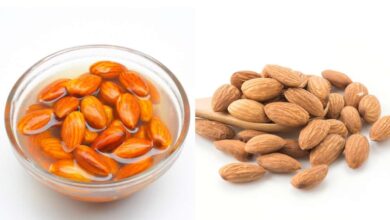Use these easy techniques to naturally prevent stroke
The Indian Stroke Association reports that throughout the last several decades, the incidence of strokes in India has increased by 100%. Actually, stroke is now the nation’s second most common cause of death. In India, there are around 1,85,000 strokes each year, or about one stroke every 40 seconds, and one stroke-related death every four minutes.
Although traditional medicine has made great progress in the prevention and treatment of strokes, an all-encompassing, integrated strategy that makes use of natural remedies has the potential to reduce the incidence of strokes in India. Stroke prevention may be achieved in part by making small lifestyle changes and forming healthy habits.
Recognizing Stroke and Its Subtypes
A stroke happens when a blood artery that supplies the brain with blood and oxygen becomes blocked or disrupted. This results in a blood and oxygen shortage that may kill brain cells.
Strokes mostly come in two varieties:
An ischemic stroke occurs when a blood clot develops or moves into a blood artery, preventing blood and oxygen from reaching the brain. About 80% of all strokes fall into this group.
Hemorrhagic stroke: This kind happens when a blood vessel bursts or ruptures within or close to the brain.
People may also come across the phrase “transient ischemic attack (TIA),” which is also referred to as a “mini stroke.” This disorder results from a brief interruption of blood supply to a particular area of the brain. Although TIA symptoms often go away in a day or two, people should still get help as soon as possible.I came onto the phrase “transient ischemic attack (TIA),” often known as a “mini stroke.” This is the outcome of a momentary interruption in blood supply to a particular area of the brain. Even though TIA symptoms usually go away in a day or two, it’s imperative to get medical help right away.
Natural Methods to Reduce the Risk of Strokes
The following are a few natural strategies to reduce your risk of stroke:
Aim to Maintain a Healthy Weight
Remaining within a healthy weight range is essential for reducing the risk of stroke. Obesity and being overweight are the main risk factors for strokes, and the risk is further increased by their close relationships to other medical disorders including diabetes and high blood pressure.
Research indicates that an individual with excess weight has a 22% increased risk of stroke in comparison to a person of normal weight. The risk increases to 64% greater for people who are obese. Both regular exercise and calorie monitoring are critical for successful weight management. By following these healthful habits, you may lower your risk of stroke and improve your general wellbeing.
Make regular exercise a priority.
Frequent exercise is essential for reducing the risk of stroke by affecting important risk variables. In addition to helping with weight control or reaching a healthy weight, it successfully lowers blood pressure and blood sugar levels.
Exercise is a strong and autonomous habit that may reduce the risk of stroke on its own, regardless of its effects on other aspects of health. Notably, those who regularly participate in physical exercise have a lower risk of suffering a stroke. Additionally, people who lead an active lifestyle likely to have a greater survival percentage in the unfortunate case of a stroke than those who maintain a sedentary one.
For those who want to take the next step in preventing strokes, adding yoga to their practice may have a profound effect. In addition to improving balance and flexibility, this age-old technique also eases tension and encourages relaxation. Yoga has an important role in managing blood pressure and boosting blood flow, which are critical elements in lowering the risk of stroke. It emphasizes attentive breathing and gentle movements.
Keep an eye on your diet.
Following a nutrient-dense diet can improve other stroke risk factors in addition to helping with weight control. For example:
Cutting down on salt consumption may help lower blood pressure.
Improved cholesterol profiles may result from include heart-healthy oils, walnuts, soy beans, and linseeds as sources of healthy fats.
Limiting sugar intake may help you better regulate your blood sugar levels.
It’s crucial to remember that cutting calories doesn’t have to be the main goal. Rather, people need to give precedence to consuming nutrient-dense meals such as fish, poultry, whole grains, legumes, fresh fruits, and vegetables. In contrast, for the best chance of preventing stroke and maintaining general health, it is best to restrict or completely avoid the consumption of simple carbohydrates, red meat, and processed meals.
Get Restful Sleep
New studies highlight the strong link between poor sleep quality and an increased risk of stroke. Not only does inadequate sleep have a correlation with issues like exhaustion, memory loss, anxiety, and depression, but it also increases the risk of stroke.
Numerous sleep-related conditions have been linked to an increased risk of stroke, including sleep apnea, excessive daytime drowsiness, and insomnia. In addition, having a stroke may make sleep problems worse, which increases the risk of having another stroke. Understanding the significance of getting enough sleep is critical to reducing the risk of stroke and maintaining general health.
Don’t Smoke
Cigarette smoke contains nicotine, which is bad for blood because it makes blood more likely to clot. In addition to being a major cause of aneurysm development, smoking has a direct correlation with lung, heart, and other types of cancer. Smoking increases the risk of stroke by twofold for ischemic attacks and fourfold for hemorrhagic strokes. It also causes atherosclerosis, which is characterized by fatty deposits in the carotid artery, a vital blood channel that supplies the brain. One of the most important things you can do to lower your risk of stroke and protect your general health is to quit smoking.
Avoid Experiencing Both Mental and Physical Stress
The chance of having a stroke might increase when one is exposed to stressful situations. Stress levels may be raised by a variety of factors, including not getting enough sleep, working long hours, feeling emotionally stressed out all the time, or taking on physically demanding activities. Consequently, hormones that raise blood pressure and increase the risk of blood clot formation are released. Supressing emotions of wrath, resentment, hostility, or repressed animosity—all of which may raise the risk of stroke—requires skillful stress management and reduction techniques like meditation.
Control Diabetes
One of the main risk factors for stroke is diabetes. High blood sugar may cause damage to blood vessels, which raises the risk of blood clot development. Stroke prevention depends on successfully managing diabetes. This entails following a nutritionist’s advice, routinely checking blood sugar levels, and introducing healthy lifestyle choices like exercise and a balanced diet into daily activities. Through proactive measures, people may significantly lower their chance of suffering a stroke.
Developing a personalized strategy is necessary for stroke prevention since there is no one-size-fits-all answer. Through the integration of these tailored approaches to target their unique risk factors, people may reap the greatest and longest-lasting advantages for their general health and wellness.







